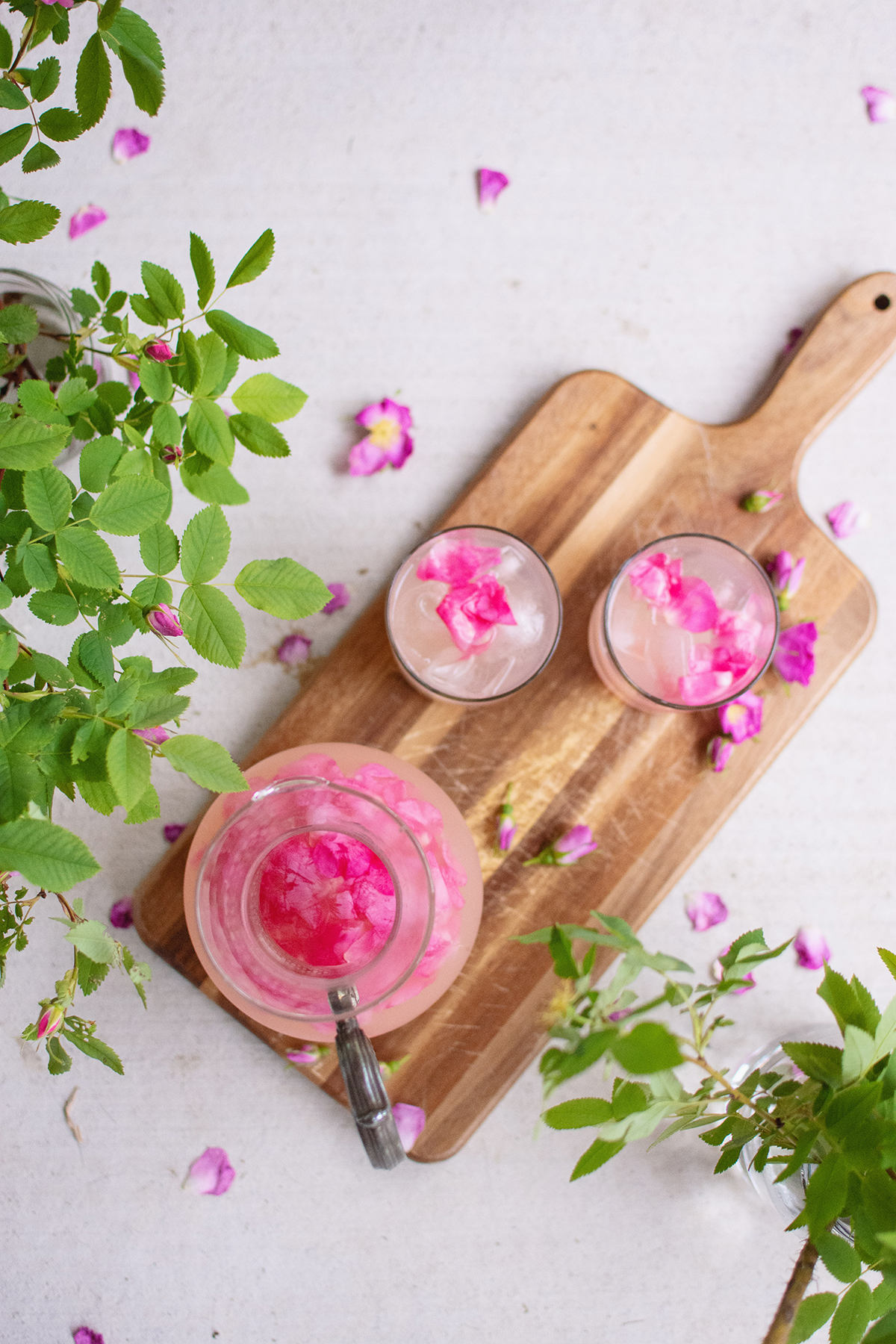Elderberry Syrup
These jewels of a berry are quite the catch. Tasty, delicious and immune boosting when cooked! The berries are antiviral and immune stimulating.
This plant is technically a shrub but they get quite large (upwards of 30 feet). Elder is found all over temperate North America. There seems to be an abundance in the wild so let’s keep it that way!
Tips for Foraging Elderberries:
1. Gather away from the road or high traffic areas. Find shrubs that are off the beaten path (not close to roads where they can have pollution on them).
2. Treat with care! And leave plenty for the birds (or other creatures) and other gatherers as they use these as a source of food too!
3. Don’t consume it if you can’t confirm it’s an elderberry!
4. Don’t consume the leaves or red twigs of the elderberry.
5. Cook the berries – raw berries can cause digestive upset.
How to know the difference between elderberries:
There are black elderberries and blue elderberries. Blue elderberries have a white film on them, supposedly used for making natural yeasts for wine. Black elderberries look dark purple, almost black as shown below. The rest of the photos are of blue elderberries.
Last year, I enjoyed an elderberry picking day with friends Alisa of Creatives NW and Katya of Katya Higgins Photography. Alisa used her Roo apron. How handy is this thing? I’ll be bringing mine this Saturday to Alisa’s Homestead Day!
Things that are also handy for foraging elderberries, include a small step ladder and a bucket or basket.
Here’s Alisa using her Roo:
Yesterday, my husband took the kids and I up to the mountains for grouse hunting. We found a couple of elderberry trees. Unfortunately, a few looked over -foraged so we skipped on foraging and just grabbed a bundle from one tree further up the mountain (that hadn’t been foraged) to add to a batch of waffles or pancakes. Other animals that eat elderberries are bird (particularly game birds), rodents, squirrels, and bears! Please leave some for them too! Ferae Naturae – let the wild be wild!
Once the berries have been gathered, they must be rid of their stems. You can use forks but I prefer to use my hands to gently fondle the elderberries off the stems. The process is a little slow but it helps to do it with a friend, make conversation and it goes quickly.
Why use an instant pot for cooking elderberry syrup?
Why the instant pot? There is some debate and misinformation out there. Raw is not always better, particularly in the case of elderberries. Elderberries must be heated to make syrup. The raw berries can cause digestive issues. Because they need to be heated, I would say the instant pot is just as ideal as stovetop. Maybe better because it keeps the steam in (so you’re not loosing nutrients that way). Plus, the instant pot doesn’t cook the food quicker because it is hotter but because of increased pressure (a common misconception). But I do add the raw honey after the syrup has cooked so I can keep all those lovely immune-boosting enzymes in raw honey.
For my elderberry syrup, below is a basic recipe and then a more complicated one.. Let the elderberries shine through! I also use less honey than some syrup recipes call for. I think my ratio is plenty sweet!
The Instant Pot ratio:
1 cup elderberries : 2 cups water : 1/2 cup honey
The Stovetop ratio:
1 cup elderberries : 3 cups water : 1/2 cup honey
Delicious Apothecary Mary version
1 cup elderberries: 2-3 cups water : 1/2 cup rosehips : 2 cinnamon sticks : 3-4 slices of ginger : 1/2 heaping cup honey
Elderberry Syrup in Instant Pot:
1. Rinse berries.
2. Gently fondle/rub berries off the stems (do not consume stems).
3. For every cup of berries, add 2 cups water to the instant pot. Cinnamon Sticks or other spices are optional.
4. Seal the instant pot and set Manual for 18 minutes. Let manually release.
5. Pour cooked mixture over a strainer, pushing with wood spoon to release all the juice from berries.
6. While syrup is still warm, add honey and mix.
Elderberry Syrup on Stovetop:
1. Rinse berries.
2. Gently fondle/rub berries off the stems (do not consume stems).
3. For every cup of berries, add 3 cups water to a large stockpot with lid. Cinnamon Sticks or other spices are optional.
4. Boil then simmer for 40 minutes.
5. Pour cooked mixture over a strainer, pushing with wood spoon to release all the juice from berries.
6. While syrup is still warm, add honey and mix.














I don't have access to fresh elderberries but I do have a bag of dried elderberries. Can I use the dried berries instead? If so, does the amount of elderberries change?
ReplyDelete